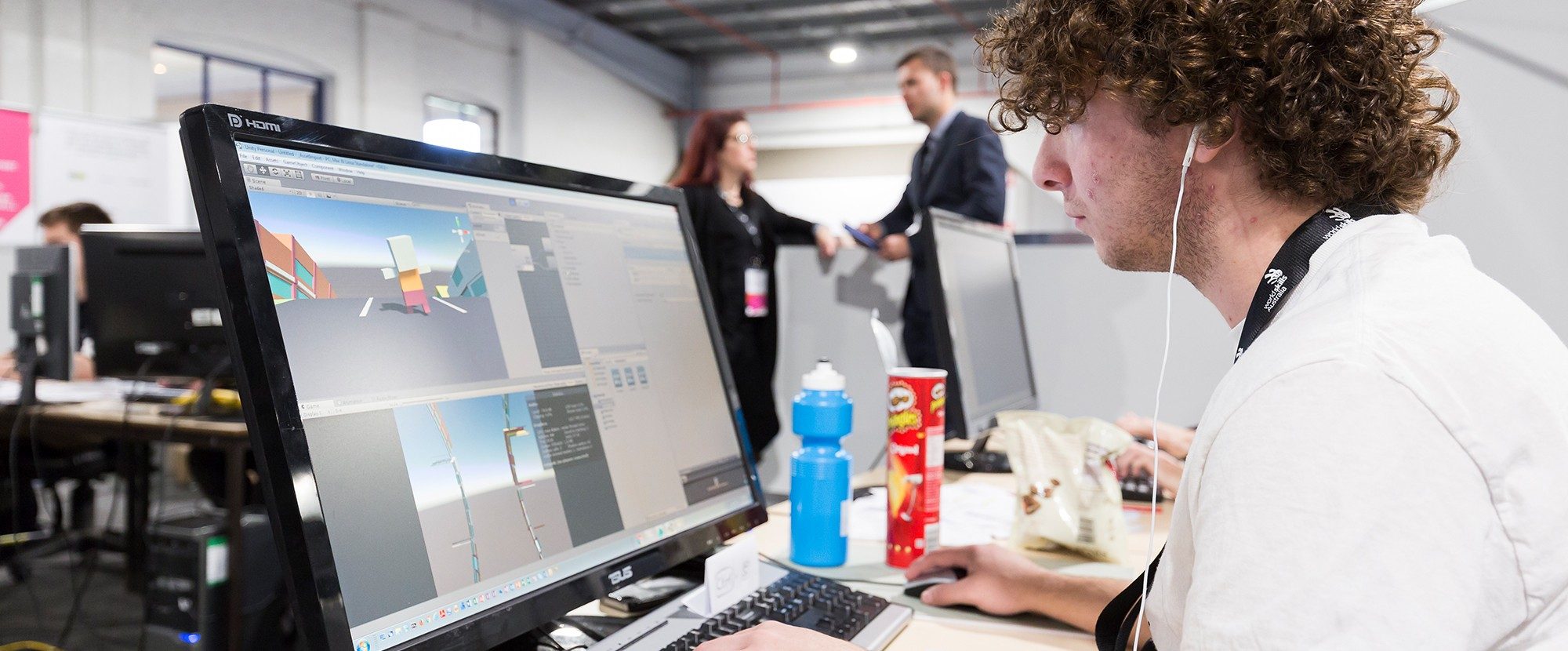3D Digital Game Art Competition
Game designers and developers normally work as part of a comprehensive team that coordinates the complex task of creating a new video game. Game designers have duties like designing characters, levels, puzzles, art and animation. Game developers are involved in aspects of a game’s creation from concept and story-writing, to coding and programming. Other potential areas of work for game developers include audio, design, production and visual arts.
The WorldSkills Australia 3D Digital Game Art Competition will see Competitors harness their creative talents and combine them with the practical and technical skills to build 3D assets.
YOU SHOULD PURSUE A CAREER IN 3D DIGITAL GAME ART IF YOU:
- Have good computer skills
- Have logical thinking ability
- Have creative design aptitude
- Have technical aptitude
- Have artistic skills
IT ALL BEGINS AT A REGIONAL COMPETITION
The WorldSkills Australia 3D Digital Game Art Competitions begin at a grass roots level in one of 42 Australian regions. The 3D Digital Game Art Regional Competitions test the skills and knowledge of 4000+ apprentices, trainees and students, who have the opportunity to win gold, silver and bronze medals and gain the chance to go on to compete at a national level.
WorldSkills Australia competitions operate on a two-year cycle. The next 3D Digital Game Art Regional Competition rounds are now running across the country. 2023 and 2025 are the next National Championship years.
Register your interest to compete in 3D Digital Game Art
Training Package Requirements
The WorldSkills Australia 3D Digital Game Art Competitions are aligned to the National Information and Communications Technology Training Package.
Regional Competition
Training Package Requirements – Regional Level
The WorldSkills Australia Regional Competition in 3D Digital Game Art is aligned to the Units of Competency contained in the ICT40120 – Certificate IV in Information Technology (Gaming Development Specialisation) and ICT30120 – Certificate III in Information Technology qualifications.
Regional Tasks
The Regional Competition involves a number of tasks leading to the creation of two 3D assets. Competitors will work individually to create:
- An organic (sculpted) 3D Asset with PBR textures
- A hard surface (modelled) 3D Asset with PBR textures
- Minor animation of the organic asset
The competition project is designed to test the Competitors skills in the following areas related to 3D Digital Game Art:
- Time management and organisational skills
- Design skills
- 3D Asset creation, including:
- Modelling
- Sculpting
- UV export, Map generation and PBR texturing
- Basic rigging and animation skills
Regionals Competition Duration
The competition is completed in 6 hours over 1 day not including briefing or breaks.
National Competition
Training Package Requirements – National Level
The WorldSkills Australia National Competition in 3D Digital Game Art is aligned to the Units of Competency contained in the ICT40120 – Certificate IV in Information Technology (Gaming Development Specialisation) Qualification.
National Tasks
The National Championship in 3D Digital Game Art is designed to test Competitors’ skills in creating 3D Assets for games. This will be done by means of a Competition consisting of the following modules
- Concept Art
- Modelling/Sculpting
- Unwrapping & Texturing
- Animation and display in Engine
Skills Required:
• The ability to self-organise and manage time appropriately
• The ability to create digital concept art, given the appropriate software (eg Photoshop)
• The ability to sculpt and model 3D assets, given the appropriate software (eg Maya, ZBrush)
• The ability to unwrap and texture 3D assets, given the appropriate software (eg Maya, Substance Painter)
• The ability to rig and animate 3D assets, given the appropriate software (eg Maya)
• The ability to present 3D assets in a real-time environment, given the appropriate software (eg Unreal, Unity)
Nationals Competition Duration
The competition is completed in @18hrs hours over 3 days not including briefing or breaks.
Find out about training options
Your Career website is the national directory of Vocational Education and Training (VET) organisations and courses.
Learn more about this course by following this link ICT40120 Certificate IV in Information Technology | Your Career
 WorldSkills Australia
WorldSkills Australia 